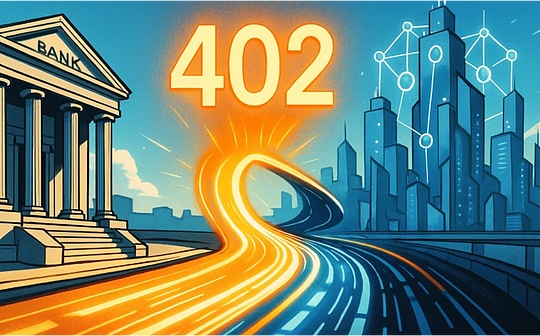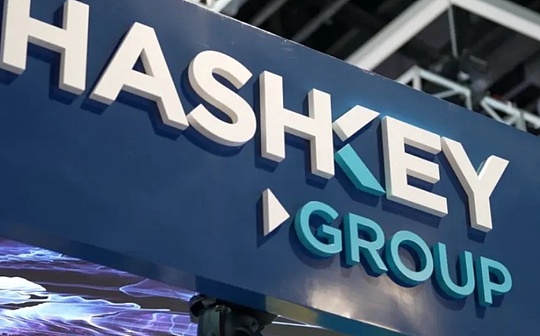
Source: unchainedcrypto translation: good Ouba, Bitchain vision world
The EIGENLAYER protocol is widely welcomed by pledged the Ethereum tokens.However, the agreement has recently decided to ban US and Canadian users from participating in the upcoming EIGEN tokens, which has attracted much attention from other pledge agreements such as Karak and Symbiotic.
But what is the difference between Symbiotic and Karak and Eigenlayer?
In this guide, we will study the emerging rights and interest certificate Symbiotic and Karak, which are different from the EIGENLAYER protocol, and the difference between them.
What is again pledged?
Re -pledge refers to the pledge of pledged assets or mobile pledge assets to protect other networks or applications.
The concept aims to re -use idle assets to pay the startup cost of the new agreement, and in this process, it is pledged to inspire re -pledges by rewarding rewards.
What is eigenlayer?What role does it play in Ethereum Re -pledge ecosystem?
EIGENLAYER promotes the pledge of the pledged ETH and allows the pledged to receive additional pledge rewards for their contributions.
The agreement uses the retraction of Ethereum’s trust infrastructure to the new protocol that lacks sufficient resources to inspire new authenticants.
Having said that, EIGENLAYER’s current focus is to pledge ETH assets and LIDO’s mobile pledged token (LST), and plans to expand the coverage of the network in the future.
The initial scope created opportunities for the two emerging competitors Symbiotic and Karak.
What is Symbiotic?
Symbiotic is a new competitor in the field of repurchase. Verifications can pledge their assets through this kind of agreement with no license, thereby achieving sharing security.
Symbiotic uses a modular design to support the re-pledge of various ERC-20s (including STETH), and allows developers to fully control the entire pledge process.The minimum coordination layer of the protocol can insert the existing or new protocol.In addition, its flexible re -pledge logic allows developers to choose their favorite mortgage assets, verifications nodes, rewards and cutting systems.
The main features of Symbiotic
The following is the main component of the Symbiotic protocol:
-
Multi -asset mortgage: Symbiotic supports pledge from a variety of networks, including ERC-20 compatible assets, LP tokens and other digital assets.
-
Insurance library: These are customized contracts to process mortgage commission to handle cross -network to operators.
-
Operator: These are entities that represent the network management infrastructure.
-
Parser: Multifunctional contracts, responsible for approval or rejecting operators’ reduction of fines on the network they provide.
-
network: These protocols need a set of verification nodes to provide credible minimum services.
Symbiosis and disadvantage
The following is the advantages and disadvantages of Symbiotic:
advantageThe
-
Provide developers with flexibility, so that they can customize the re -pledge agreement according to their needs: the network is responsible for the implementation of the pledge, and the pledged person can choose to join or exit the shared security contract.
-
Provide security with tolerable costs: providing high -quality security by using a variety of asset mortgages, which not only makes the security cost of sharing the new blockchain network tolerable, but also eliminates the construction of a security agreement from scratch.The complexity.
-
Improve capital efficiency: Symbiotic’s unauthorized network provides a scalable method for the re -holders of cryptocurrencies to provide funds for the startup cost of new projects.
shortcoming:
-
Limit the scale of mortgage: The number of mortgage assets in the launch phase is limited, and only supports the mortgage assets of the main agreement.
What is Karak?
Karak is another new entry in the field of pledge. It distinguishes itself from Eigenlayer and Symbiotic by providing more comprehensive sharing security methods.
The agreement supports various assets, such as Eigenlayer core products such as ETH and LST, but further adds LP tokens, stablecoins, WBTC, STAFI’s mobile equity tokens (LRT).
Karak allows the pledged to pledge its pledged tokens and submits its assets to the distributed security service (DSS) on the Karak protocol, and awarded its additional execution rights for pledged assets.
The main features of Karak
The main features of the Karak protocol are as follows:
-
Re -holder: These participants protect Ethereum and other networks for rewards.
-
Distributed security service: DSS uses the re -pledged assets to improve security and reduce operating costs.
-
chain: Chain or services provided by distributed security services.
-
Operator: It can be an individual or entity that verify distributed security services.
Karak’s advantages and disadvantages
The advantages and disadvantages of Karak are as follows:
advantage:
-
Multi -asset re -pledges: This component enables the re -pledges to provide a basket of assets to DSS, thereby preventing the failure of a single asset to endanger DDS.
-
Unlimited pledge: This agreement allows developers to build products on L2 and side chains, rather than focusing on Ethereum L1.
-
Travel key development: Karak’s powerful agreement allows developers to seamlessly iterate and deploy new unique services.
shortcoming:
-
Reward pledge is not feasible for ETH assets: Only by receiving assets lower than ETH by receiving capital costs can achieve sustainable returns.
Eigenlayer and Karak and Symbiotic
The following are the comparison of the three re -pledge agreements:

Symbiotic and Karak provide two striking methods to change the re -pledge we know.Eigenlayer focuses on Ethereum’s core infrastructure, providing a strong and solid foundation for building a safe decentralized application.
But this is just the surface of many possibilities.
Symbiotic is becoming a leader who can obtain economic protection from a variety of mortgage assets.Its scalable network enables other networks to customize its re -mortgage implementation.
Karak has opened up new possibilities for the interoperability and capital efficiency of multiple ecosystems through its extensive support.The agreement may introduce a double -sided pledge method in the future to encourage users and service providers to actively participate in the network.
Summarize
As Symbiotic and Karak continue to contribute to the re -pledge field, network builders and users will gradually recognize their respective capabilities and limitations.By improving the effectiveness and security of mortgage assets, these agreements are expected to promote further innovation of the Ethereum ecosystem.








